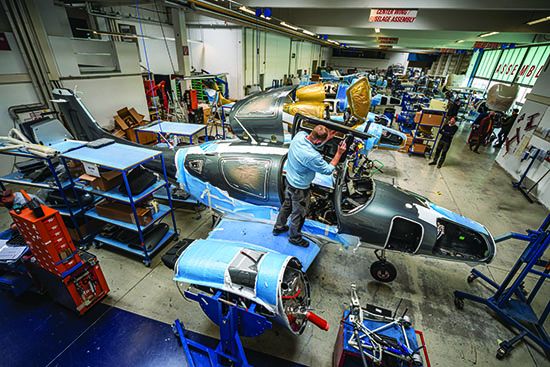From Charlie Taylor’s cast aluminum block for the original Wright Flyer engine, aerospace manufacturers have been on a never-ending quest for lighter, stronger and better materials. From early airplanes constructed of doped fabric over wood substructure to metallic substructure and then to all-metal airplanes, the pursuit to achieve a higher/faster/longer-range (with more payload) flight continued to push the boundaries of materials science. Models from Cirrus and Diamond, as two examples, are proof of serious progress.
Still, the specific materials—and the critical manufacturing techniques—used to construct composite airframes should be considered when searching for a used airplane. Not all are created equal (especially with homebuilt experimentals), and repair and modification (including paint work) will be very different than on most metal airframes.
In this article we’ll take a look at the unique advantages and challenges that tag along with owning one, and why the future of composite aerospace manufacturing looks brighter than ever.
WHY COMPOSITES?
And perhaps, why not? Composites consist of two or more individual materials which, when combined, exhibit properties that neither has separately. Very early aerospace composite materials included doped fabric and plywood. The de Havilland DH.98 Mosquito of World War II fame could be considered one of the first “composite” production planes with its laminated wood fuselage consisting of thin wooden facesheets shaped in tooling and bonded to a balsa core.
For the purpose of this article, we’ll focus on primary structure (carrying significant flight loads) composites, which are thin layers (plies) of continuous (as opposed to chopped) fiber-reinforced thermoset plastics (typically, epoxy resin) that are stacked in specific orientations and cured with pressure and temperature. There are many other “flavors” of composites, but this definition will capture over 90 percent of the general aviation applications.
The advantages of a composite airframe are numerous but they don’t come without drawbacks, which need to be addressed by the airplane design team before production. Moreover, they should be clearly understood by owners and maintainers because eventually, someone is going to deal with repairing or at least inspecting damage.
Composites offer design flexibility and improved structural efficiency (stronger and lighter) as we’ll as reduced drag and enhanced fatigue and corrosion resistance. But this comes at the cost of higher material price as we’ll as challenges with detail-orientated production processes and in finding or fixing in-service damage.
Aerospace composites consist of two primary materials: fiber and resin. The fibers provide most of the load-carrying capability (and stiffness); the resin gives shape and holds the fibers in place as we’ll as transferring load between fiber and plies and providing most of the damage resistance. Classes of fiber include carbon and fiberglass; there is a vast and sometimes bewildering array of choices within those classes (especially with carbon fiber). Fiber arrangements can come in two flavors: unidirectional (all fibers going in the same direction) or fabric/cloth (fibers are typically woven in two perpendicular directions).
For general aviation primary composite structure, epoxy is almost exclusively used for its balance of performance and cost. However, it’s important to note that there can be dramatic differences in how the resin reacts to environment (temperature and humidity, in particular) as we’ll its resistance to impact damage.
PROCESSING BASICS
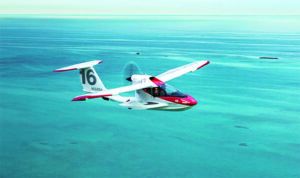
At its most fundamental, composites need a way for the resin and fibers to be combined—a method for the thin layers of material (plies) to be stacked on the shape (tool or mold) in the orientation and to the thickness desired. There’s also the elevated temperature and/or vacuum pressure to cure the resin to produce full mechanical properties and fix the part in its final shape. Properties can be further enhanced by applying additional pressure in an autoclave, which is essentially a pressurized oven.
General aviation composite processing started out (and in some cases, continues to this day) as wet layup where the resin is manually spread onto dry fabric and then cut and stacked on the cure mold.
A step up from this process is to use prepreg—fibers that are pre-impregnated with resin and ready to be cut to shape and laid up (called hand layup). A major advantage of prepreg is quality and consistency. This includes the uniformity of resin/fiber, tight controls on resin content and fiber volume (which influence mechanical properties) and reduced porosity by eliminating air entrapped during wet layup resin mixing and application.
![]()
However, both of these processes are very labor intensive, which adds both cost and variability.
AN AGING FLEET
First-generation general aviation production planes with a high content of composites such as the Diamond Katana/DA20 or the Cirrus SR20 generally were mostly fiberglass-reinforced for its low cost and ease of inspection (being semi-translucent, a good strong blacklight can reveal most defects with a simple visual inspection). Second-generation planes such as the DA42 or SR22 increasingly applied carbon fiber and third-generation planes like the DA62, SF50 Vision Jet, Icon A5 and Epic’s E1000 are moving to mostly or all-carbon construction for its structural efficiency.
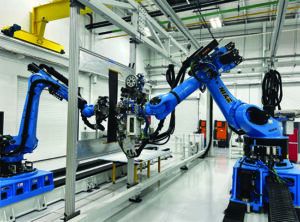
Brock Strunk, chief engineer for Epic Aircraft, says that fatigue resistance (especially for a non-circular pressurized fuselage) and ability to tailor wing airfoil shapes were among the key characteristics that led Epic to choose an all-composite airframe for its six-seat turboprop E1000.
The head of design at Diamond Aircraft, Robert Kremnitzer, thinks that with proper design rules there are no real engineering disadvantages to increasing amounts of carbon composites. He sees a stable supply of affordable carbon fiber as the biggest challenge.
Similarly, the trend in resin systems is to choose higher-performing epoxies, which allow darker paint as we’ll as improve damage resistance. Hand layup of prepreg or a hybrid (like the “wet preg” that Diamond uses to help control wet layup resin application) is still mostly used in general aviation for composite processing, leading to high labor costs and the need for a highly skilled and detailed-oriented workforce. Cures generally occur in an oven with vacuum pressure, though some smaller and more highly loaded parts may be cured in an autoclave.
Shopping the composite market? Understand that early mainstream composite models are nearing 30 years in service. Current and prospective owners need to be aware that while composites generally are quite durable, damage can occur and can be more difficult to detect than in metal airframes. Involving an A&P mechanic who has extensive composites experience and specific training would be wise, as we’ll as reaching out to the OEM when in doubt. Repairs on primary structure may require a factory design or approval depending on the extent and location of the damage. For an in-depth look at the repair process, read the April 2020 composite upkeep article in Aviation Consumer.
If you’re looking at a potential used composite buy, there are several particular areas on the airframe to look out for. This includes the aircraft’s corners (wingtips, empennage tips) and also around baggage doors where hangar rash is most likely to occur. Look closely at the wing skins around fuel tank openings and any sandwich structure (composite plies bonded to honeycomb or foam core)—especially in fuel areas.
Pay close attention to the bottom of the fuselage, lower wing skins and lower control surfaces for any foreign object impacts during ground operations. Any visible dents or other damage should either be blacklight or ultrasonic inspected for internal ply separation (delaminations).
Remember that certified airplanes are built to defined quality and process standards in temperature- and humidity-controlled environments, all of which benefit the consistency and reliability of composites and bonded assemblies. Experimental composite planes should be treated with an extra measure of skepticism and inspection during maintenance and especially during prebuy evaluation. This isn’t to say that many completed kits haven’t been built to extremely high standards. Others we’ve seen—not so much.
Even the FAA weighs in with its Advisory Circular 20-107B (Composite Aircraft Structures), stating in part: “One of the unique features of composite construction is the degree of care needed in the procurement and processing of composite materials. The final mechanical behavior of a given composite material may vary greatly depending on the processing methods employed to fabricate production parts. Special care needs to be taken in controlling both the materials being procured and how the material is processed once delivered to the fabrication facility.”
Strunk (Epic Aircraft) echoed the FAA’s guidance and emphasized the need for process control, especially for adhesive bonding of major structure, but said that going to all-bonded assemblies meant that they had to use only about 100 fasteners on the entire airframe, resulting in an extremely slick design that can cruise at 330 KTAS.
LOOKING TO THE FUTURE
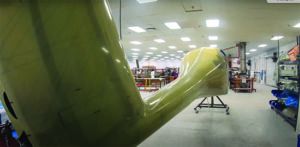
During our research, we asked Cirrus Aircraft the same questions presented to the other manufacturers, but Cirrus told us it wasn’t comfortable answering them because they were revealing.
Driven by growth projections of composites on general aviation aircraft as we’ll as Advanced Air Mobility (AAM, or “air taxis”), the composite materials industry is moving to develop higher-performing composites that simultaneously reduce material and in-service costs.
Advances in toughened epoxy resins that can cure at lower temperatures and pressures, while still providing autoclave-like properties, mean that in-service damage will be reduced. It could result in fewer hangar rash repairs and reduced concern about the minor bumps and dings that are part and parcel of operating general aviation airplanes. Additionally, these new tougher resins allow stiffer carbon fibers in their unidirectional format to be utilized. Unidirectional fibers are roughly 25 to 50 percent more efficient than their woven cloth counterparts because by utilizing unidirectional carbon and toughened epoxy, significant weight reductions are possible, as we’ll as freeing up internal wing space for more fuel.
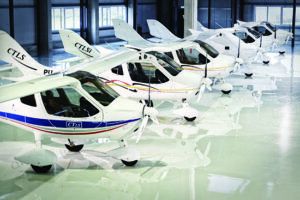
The new resin systems will also be thermal and UV resistant so that any paint color (or no paint to show off the carbon weave) on almost any location of the plane will be available, opening up a wide range of aesthetic possibilities to really make your ride “pop” on the ramp. This wasn’t the case with earlier composite aircraft, which were generally available in multiple colors—as long as it was white.
Financially, high-performance semi-crystalline thermoplastic resins are trending down in price and offer much better damage tolerance when compared to epoxy, even toughened epoxies. Carbon fiber will continue to gain popularity in general aviation primary structure applications for its unbeatable structural performance, particularly in stiffness. New advances in carbon fibers and new production plants with additional carbon fiber capacity add up to a reduction in cost of the carbon fiber, further driving its utilization across general aviation. Additionally, new weaving techniques and pre-plying can increase performance or reduce costs of woven carbon materials.
New adhesives and surface preparation materials that ensure bond integrity will expand bonded highly integrated assemblies with very low drag surfaces.
What can these composite material advances mean for the pilot-owner of future composite general aviation airplanes? Lower ownership costs and better fuel and range performance. But it’s also about efficient manufacturing.
Research and development of new composite processes are focused on higher build rates and lower unit cost. Part of this effort is focused on how to make the current baseline hand layup process more efficient; the other area of interest is how to automate to reduce cost and improve repeatability.
Current baseline hand layup can be improved by the use of laser projection to quickly locate (and verify) ply locations, automated ply cutting machines and reusable vacuum bags. Additionally, resin infusion processes—which use dry fabric under vacuum to pull resin in—with braided or 3D-woven carbon fiber preforms offer the possibility of easier manual fabrication of large or very complex geometries.
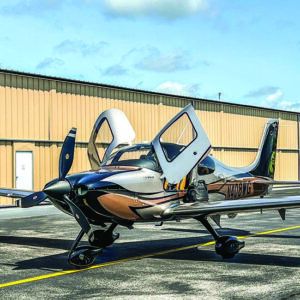
New automated systems such as advanced fiber placement (the original additive manufacturing process for continuous fiber composites) and automated tape layup use robots to lay down the plies onto cure tools. Not only do these processes yield extremely high-quality and consistent composite structure, they take advantage of unidirectional carbon fiber for the ultimate in structural efficiency.
The press forming of composites (either thermoplastic or epoxy)—which uses heated tools and mechanical force to cure—offers the possibility of reducing part processing cycle time from days or hours down to minutes.
Looking at the advances in composite material and assembly processes advances gives us an idea of what to expect from composite aircraft structural manufacturing in the next five to 10 years.
• Primary load-bearing structure, including spars, frames and keels, made out of toughened epoxies with unidirectional intermediate modulus carbon fiber via automated processes to increase performance, while at the same time reducing both weight and cost.
• Highly integrated structures: Fuselage and/or wing skins with integral co-cured composite stiffening features will allow for higher performance while reducing weight and eliminating in-service problems associated with thin facesheets over honeycomb or foam core. The integration also greatly reduces assembly time and cost.
• Tailored materials for specific loading: For instance, wing skins tend to be very different structures in flight because of bending, as the upper wing skin is loaded in compression, while the lower wing skin is primarily tension. By using specific fibers (some carbon fibers are better in compression and others in tension) and resin systems for each wing skin, significant weight reductions are possible.
• Multi-blade (three and four)composite propellers may become more common. In addition to ramp appeal, composites offer the ability to sculpt airfoil shapes and chords. This reduces weight where it matters most while boosting performance and taming vibration for a more comfortable cabin dwelling.
Jon Bristol, chief engineer at Sensenich Propeller, says that composite props are about half the weight of their metal counterparts, more responsive to changes in engine power and have proven to be very durable in service.
• Thermoplastic structure: Long valued for their tremendous toughness, the reduction in high-performance thermoplastic material and processing costs may mean we’ll see these begin to appear in areas where impact is common, such as fuselage bellies or around baggage areas.
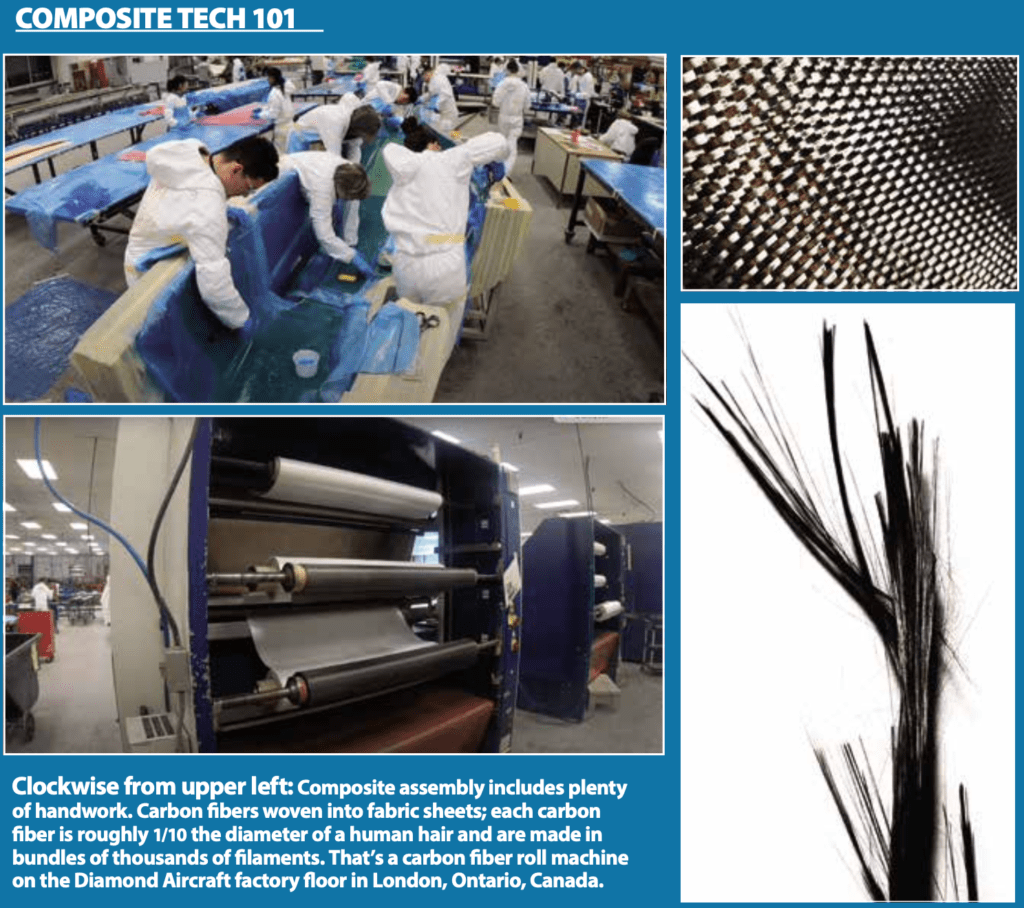
FUTURE NEEDS
As Robert Heinlein famously wrote: TANSTAAFL (There Ain’t No Such Thing As A Free Lunch) and certainly composites are not free of that axiom.
As we see more general aviation airframes with higher percentages of primary structure made of composite materials, we have an immediate and near-term need for more well-trained and experienced composite technicians, A&Ps and IAs. Just like when the industry was pivoting from fabric and wood to metal, changes in inspection and maintenance practices must be implemented.
Composite components are intolerant of install errors (over-torqued hardware is one example) in ways that metals might not be. Damage can be subtle and at times, internal and therefore undetectable (in carbon) by a simple visual inspection. Bonded assemblies and repairs are extremely dependent on proper surface preparation to achieve a durable joint. Easy to use, portable and relatively low-cost inspection systems with automated interpretation of results need to be developed.
The increasing replacement of fiberglass with carbon means that additional care must be taken to avoid galvanic corrosion. Most metals in direct contact with carbon fibers will begin to corrode; the metal must be isolated from the carbon with a thin layer of fiberglass, primer, sealant or some other method. Maintainers must be aware of these issues and be alert for metal/carbon combinations, especially at fasteners, clips, brackets, hinges and other parts.
Composite airframes can be a challenge to properly design for good electromagnetic properties, either in static charge buildup or direct/indirect lightning effects. Carbon fiber conducts electricity, but much less efficiently than metals (and forget about fiberglass) so having a highly conductive surfacing film or other composite treatments that can make the plane appear more “metallic” to charged particles is critical. Combining composite skins with composite substructure only complicates the issue. Design practices to ensure electromagnetic performance need to be coupled with repair and maintenance to ensure integrity of the airframe over its lifetime.
Last, pilots need to be better informed on the strengths and weakness of the composites on their particular (or prospective) airframe. While you don’t have to be a complete composite geek, you should understand the basics of fiber, resin and overall construction. Industry and advocacy groups’ (including GAMA and AOPA) leadership in this area is key, plus the FAA is willing to support certification standards and training programs that improve safety.
The future looks bright for composites in general aviation. Leveraging materials and processes being developed for other markets will enable significant performance gains (carrying more farther and faster for less fuel burned) while improving durability and reducing in-service headaches.
As Diamond Aircraft’s head of design organization, Robert Kremnitzer, said after reflecting back on 30 years of service life for their products: “Composites are in our DNA. We wouldn’t think any different. We wouldn’t design any different. We think it’s a great material.”
Contributor Gary Bond is a composites Technical Fellow for Solvay—a composite material supplier. He retired from Boeing as a Technical Fellow, and owns a Grumman Tiger.

